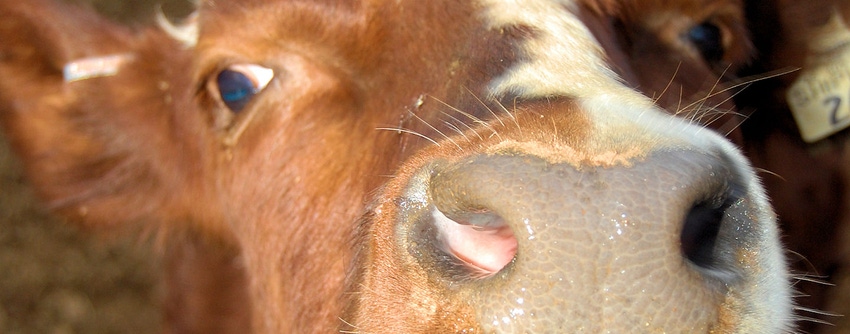
Mark Hannan figured out a long time ago that closely bred cattle give more consistent performance.
He learned that from the extensive use of Jersey dairy cattle in his east-Texas dairy.
Nine years ago Hannan began scouring the nation for the few remaining strains of linebred beef cattle. He bought the best representative groups he could and started his own linebred herds, an operation he calls Happy Cattle Company, just south of Canton, Texas.
One of the lines he brought home is a group of Trask Polled Herefords, once propagated by South Carolinian Neil Trask. These are the cattle which people so far are most likely to buy from him as seedstock, Hannan says.
However, that's not all the old-line seedstock he collected.
The list
Hannan also put together herds of these origins:
Jim Lents's pure Anxiety IV horned Herefords.
Outcross herds of Anxiety IV horned Herefords from the Boyd Korb family (Louise and Sandra) at Burr Oak, Kansas, from Jane and Mike Deewall at Coldwater, Kansas, Richard Day at Sulphur, Oklahoma, and from Roy Largent at Fort Davis, Texas.
Straightbred Line One Herefords from the Miles City, Montana, research station.
Straight-bred Victor Herefords from Dogwood Farms in Kentucky and Crooked Lake Ranch in Florida.
The Kuhlman line of Polled Herefords from Nebraska, which descended from a crossbreeding by Ernie Kuhlman's grandfather, Henry, who bred polled stock with infusions of Anxiety IV blood to increase muscling and thickness.
Hannan also gathered several strains of Angus.
Moderate-framed Wye Angus bought from the University of Maryland and Randy Sipe in North Carolina.
A set of John Cotton's Angus cattle from South Dakota, which originated from Wye breeding with an outcross to Jorgensen and N-Bar breeding.
Tim Ohlde's Basic Black Angus cattle, which Hannan describes as linebred for muscle and performance, but with an outcross introduced occasionally to make improvements.
For all these lines he bought linebred bulls to match the cows and keep the strains running.
Moderation works.
Ultimately, Hannan says he was seeking moderate cattle that would work in the hot, humid weather of northeastern Texas and do it consistently from generation to generation, all the while producing their own replacements.
He sought out moderate-framed animals, mostly No. 4 or 5 frame size, but has a few frame 6 cows in some of the lines. A few of the harder-fleshing animals have been falling out of some strains and Hannan says he's nearing workable form throughout all the herds.
"If we were in North Dakota everything would likely be getting a little bigger and that would work there," he adds.
Hannan says once the cattle in each herd are settled in and bred for the environment he won't change them much. Consistent reproduction and reproducing at minimal cost are his primary goals.
Adding meat or milk or other "performance" phenotypic traits don't make sense, Hannan says, because such traits hurt reproduction.
"I don't want to keep pushing and/or changing these cattle," Hannan says. "For example, either meat or milk is antagonistic to reproduction and using my experience as a dairyman I don't understand how people think they can keep adding muscle or milk without hurting their reproductive rates."
Hannan says these cattle are consistent meat producers, consistently reproductive, have proven free of genetic faults by the fact they can be linebred, and they have no EPDs or other modern accoutrements.
"I bought them for the meat, their clean bloodlines and the fact they'll work here," Hannan says.
About the Author(s)
You May Also Like




